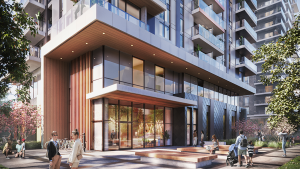OTTAWA — Vancouver and Abbotsford-Mission are forecast to be the fastest growing census metropolitan areas (CMAs) in Canada this year, and Victoria is also expected to rank in the top 10, according to The Conference Board of Canada’s Metropolitan Outlook: Winter 2018.
“The pace of growth in Vancouver and Victoria’s economies are expected to moderate this year, with the slowdown led by housing and consumer spending, but strength in other areas will keep the pace of expansion above two per cent in each metro area,” said Alan Arcand, associate director, Centre for Municipal Studies, The Conference Board of Canada.
“In contrast, Abbotsford-Mission is projected to see real GDP growth accelerate this year, bouncing back from a subpar 2017 when it notched its weakest performance since 2009.”
Below are the highlights from the outlook for the three main B.C. CMAs:
VANCOUVER
Following an increase of 3.7 per cent in 2017, Vancouver’s real GDP growth is expected to moderate to a nation-leading 2.7 per cent this year. A cooling housing market, due to rising interest rates and the expansion of a mortgage stress test, is central to our expectation of the slowdown.
This will shave growth in construction and in finance, insurance and real estate. These were two of the region’s top-performing sectors, but will throttle back along with Vancouver’s housing market.
Housing starts are anticipated to decline over the next two years, but will remain comfortably above the average of the last 10 years.
Growth is also poised to slow in wholesale and retail trade, as highly indebted consumers feel the pinch of rising interest rates.
Employment growth is expected to slow to 0.9 per cent this year too, in step with the more moderate GDP gains.
ABBOTSFORD-MISSION
Abbotsford-Mission’s real GDP growth is forecast to improve from 1.9 per cent last year to 2.5 per cent this year.
Abbotsford–Mission’s goods-producing sector will lead the way over the next two years, thanks to growing business opportunities, a lower Canadian dollar and a solid U.S. economy.
Manufacturing activity is expected to remain healthy, especially in the key wood products industry.
Although the U.S. has levied duties on exports of Canadian softwood lumber, value-added softwood lumber products, such as those produced locally, are not subject to these new duties.
The outlook for the construction sector is also bright, with housing starts and non-residential investment both poised to be strong. However, slower services sector output growth is on tap, particularly in wholesale and retail trade, as shoppers tighten their purse strings in the face of rising interest rates.
VICTORIA
Victoria’s real GDP is forecast to rise a solid 2.2 per cent this year, although this pace will be its slowest in four years. Sustained gains in most industries will underpin this ongoing growth.
Robust housing starts drive solid construction output growth over the next two years, while federal shipbuilding contracts issued to Seaspan’s Victoria Shipyards will keep the manufacturing sector expanding.
On the services side, slow but steady gains are anticipated in the all-important public administration sector, in line with a healthy provincial government fiscal outlook.
At the same time, Victoria’s burgeoning high-tech sector will help drive solid output gains in the professional, scientific and technical services industry.
The local job market has been booming, with employment growth exceeding three per cent for two consecutive years.
The board concluded that “a pullback is inevitable, so our call is for a 0.5 per cent decline this year.” The unemployment rate is projected to increase this year too, but only to 4.3 per cent.
This forecast was completed prior to the recent B.C. budget that included additional housing market cooling measures and their impacts are not included in the forecast.











Recent Comments
comments for this post are closed